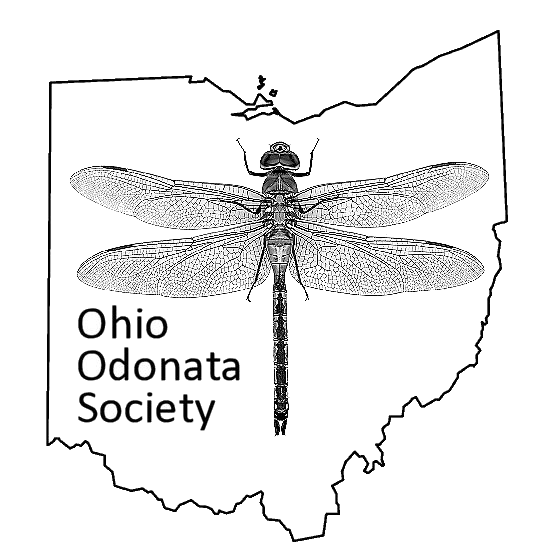About the
Ohio Dragonfly Survey
Ohio Odonata documentation began in the late 1800's, originally in the form of voucher specimens and publications. An electronic database was established in the 1990's and continues to be maintained by the Ohio Odonata Society.
Our earliest complete record is a Tiger Spiketail (Cordulegaster erronea) observed on May 7 1891 by David Kellicott in Fairfield Co. State Odonata data grew steadily with early 20th century records compiled by C.H.Kennedy, E.B.Williamson, and J.S.Hine. Data collection accelerated in 1930 with the work of D.J.Borror and H.F.Price. Their records dominate annual numbers until he late 1950's when systematic survey efforts by R.W. Alrutz, who collected specimens in 81 counties over 38 years, providing significant increases in our knowledge of Ohio odonate distribution.
In 1990, The Ohio Odonata Society was formed to improve our knowledge of Ohio Odonata. A survey was undertaken to document existing collections and publications, but also to work in the field. The efforts of the 1990-2000 survey are documented in The Dragonflies and Damselflies of Ohio (Eds R.C.Glotzhober and D.McShaffrey, Ohio Biological Survey, 2002, Bulletin Vol 14 No 2.)
In 2016, the Ohio Division of Wildlife and the Ohio Odonata Society launched a new statewide survey, supported through the Division of Wildlife as part of the Ohio Biodiversity Conservation Partnership. Funding was provided for a State Survey Coordinator, MaLisa Spring, who provided guidance to the survey, and was instrumental in the yearly Odonata Society conferences. Goals for the second survey of Ohio Odonata included:
identify every species known for each county.
identify species introduced/established in Ohio since the original survey
determine changes in distribution and abundance, especially rare species
While 19th and 20th century approaches involved collecting physical specimens, 21st century advances in information and photography technology set the stage for the second survey to expand to a significantly wider group of citizen scientists. A decision was made to use iNaturalist, an online system, as the observation registration mechanism for state odonate records, which allow users to submit photographic observations that then receive community vetting for identification. This has proven to be a reliable and accessible approach, resulting in thousands of new visual records in the OOS database, and a significant increase in our understanding of which species are active in which parts of the state.
One of the primary outcomes of this survey is a new field guide, A Naturalist's Guide to the Odonata of Ohio, created by Dave McShaffrey, MaLisa Spring, and Jim McCormac. Published by the Ohio Biological Survey, the 2024 book covers all species of Odonata known to occur in the state with mention of a few likely to be found here in the near future. Distribution data for the state combines the data from the 2002 book with new digital data (over 165,000 records from OOS members and other enthusiasts), curated into a single database by Jim Lemon.
The official Survey period is now complete, but the iNaturalist Ohio Dragonfly Survey Project continues. A core group of Dragonfly people is expanding in numbers and expertise, and we are set to continue this effort into the future.
More details on the history of odonata research in our state can be found in the 2017 presentations History of Odonata Study in Ohio and The New Survey Overview.
3 January 2025Number of observations per calendar day over the course of 130 yearsNumber of species observed per calendar day over the course of 130 yearsIf every species known to have been in Ohio were found in every county, which is extremely unlikely, it would represent over 15,000 county records. After 130 years, we are half way towards reaching this theoretical limit. 



